15 Ng. 100 Đ. Nguyễn Xiển, Thanh Xuân Nam, Thanh Xuân, Hà Nội 100000
Introduction: The Sweet Heart of the Visayas
Negros Island. Often overshadowed by its more famous neighbors, this sprawling island in the Visayas region of the Philippines holds a unique charm, a blend of rich history, vibrant culture, stunning natural landscapes, and incredible biodiversity. Known as the "Sugar Bowl of the Philippines" due to its vast sugarcane plantations, Negros offers much more than just its sweet produce. From the towering peaks of its active volcanoes to the serene depths of its marine sanctuaries, and from the elegant ancestral homes of its capital cities to the raw beauty of its waterfalls, Negros is an island waiting to be explored. This comprehensive guide will take you on an in-depth journey through the island's dual provinces – Negros Occidental in the west and Negros Oriental in the east – revealing why it's a hidden gem and a must-visit destination for those seeking an authentic Philippine experience. And for an effortlessly planned and unforgettable exploration, Golden Trail Travel is your perfect partner, ready to craft your dream Negros adventure. Visit them at https://goldentrailtravel.com/ to book your personalized tour today!
I. Unveiling Negros Island: A Tale of Two Provinces
Negros is the fourth-largest island in the Philippines, divided into two distinct provinces by the rugged mountain ranges that traverse its center: Negros Occidental in the western part and Negros Oriental in the eastern part. This division, both geographic and cultural, offers a fascinating contrast for travelers.
A. Geographic Diversity: From Plains to Peaks:
Mountain Spine: The island is dominated by a central mountain range, which includes several volcanic peaks.
Mount Kanlaon: The highest peak in the Visayas and an active stratovolcano, dominating the landscape of central Negros. Its fertile slopes contribute to the island's agricultural richness.
Mount Talinis: A complex volcano system in Negros Oriental, known for its challenging trails and beautiful crater lakes.
Coastal Plains: Both provinces feature expansive coastal plains.
Negros Occidental: Characterized by vast flatlands ideal for sugarcane cultivation, stretching from its capital, Bacolod City, southwards.
Negros Oriental: Has narrower coastal plains, leading quickly to the mountainous interior, offering more dramatic coastal scenery and closer proximity to dive sites.
Surrounding Waters: Negros is bordered by the Panay Gulf and Guimaras Strait to the northwest, the Tañon Strait to the east (separating it from Cebu), and the Sulu Sea to the south. These waters are rich in marine biodiversity, particularly the Tañon Strait, a protected seascape.
B. Cultural Tapestry: Hiligaynon vs. Cebuano:
The historical and linguistic differences between the two provinces are significant:
Negros Occidental (Western Visayas):
Language: Primarily Hiligaynon (also known as Ilonggo), a melodious language shared with Panay Island.
Culture: Deeply influenced by the sugar industry. The "haciendero" culture, characterized by elegant ancestral homes and a more refined, genteel lifestyle, is prominent, especially in Bacolod and its surrounding towns. The people are often described as "malambing" (sweet and gentle).
Capital: Bacolod City, the "City of Smiles."
Negros Oriental (Central Visayas):
Language: Predominantly Cebuano, reflecting its historical ties and proximity to Cebu.
Culture: More rugged and laid-back, with a strong focus on marine life and natural wonders. It has a more adventurous vibe compared to its western counterpart.
Capital: Dumaguete City, the "City of Gentle People."
C. Historical Legacy: Sugar and Resistance:
Negros' history is intricately tied to the sugar industry, which boomed in the 19th and early 20th centuries, bringing immense wealth but also social disparities. The island played a role in the Philippine Revolution and has a rich heritage of resilience and cultural pride.
II. Negros Occidental: The Land of Sugar and Smiles
Negros Occidental, in the western half of the island, is known for its sweet produce, elegant ancestral homes, and the infectious cheer of its capital.
A. Bacolod City: The City of Smiles:
Bacolod City is the provincial capital and the economic heart of Negros Occidental. It's famous for its warm, friendly people and the vibrant MassKara Festival.
MassKara Festival: Held every October, this is Bacolod's most famous event. It's a spectacular street dance festival where performers wear vibrant masks adorned with smiling faces, symbolizing the city's ability to smile through adversacities. A truly unforgettable cultural experience.
The Ruins (Talisay City): Just north of Bacolod, "The Ruins" is perhaps the most iconic landmark in Negros Occidental. It's the remains of the ancestral mansion of Don Mariano Ledesma Lacson, a grand Italianate structure destroyed during World War II. Today, it stands as a beautiful, haunting skeleton, especially picturesque at sunset.
San Sebastian Cathedral: A beautiful old stone church in the heart of Bacolod, a testament to its colonial past.
Bacolod Public Plaza: The central park surrounded by historical buildings, a perfect spot for people-watching.
Provincial Capitol Lagoon and Park: A scenic spot with interesting sculptures and a relaxing atmosphere.
B. Gastronomic Delights: The Food Capital:
Negros Occidental is a true culinary haven, especially for meat lovers and those with a sweet tooth.
Chicken Inasal: Bacolod's most famous culinary contribution. Grilled chicken marinated in a unique blend of vinegar, calamansi, ginger, garlic, and annatto oil, giving it a distinct yellowish hue and savory-sweet flavor. Must be eaten with garlic rice and dipping sauces!
Cansi: A sour and savory beef soup, a local version of "Bulalo" but with a distinct souring agent (batuan fruit), giving it a unique tangy flavor.
Piaya: A flat, unleavened bread filled with muscovado sugar, often flavored with sesame seeds. A popular pasalubong (souvenir food).
Napoleones: A French-inspired pastry with layers of puff pastry filled with custard cream and topped with sugar glaze. A sweet treat from Bacolod.
Lumpia Ubod: Fresh spring rolls filled with palm heart, a specialty of the region.
Varieties of Kakanin: Traditional Filipino rice cakes and sweets, reflecting the island's abundance of sugar.
C. Beyond Bacolod: Haciendas and Nature:
Silay City: Known as the "Paris of Negros" or the "Museum City of Negros," Silay boasts over 30 ancestral houses, many of which are beautifully preserved examples of turn-of-the-century architecture, reflecting the wealth generated by the sugar industry. Don't miss the Balay Negrense Museum and Bernardino Jalandoni Museum.
Talisay City: Besides The Ruins, Talisay offers more insights into the sugar industry and eco-tourism sites.
Sipalay City: On the southern coast of Negros Occidental, Sipalay is gaining popularity for its pristine beaches (Sugar Beach, Punta Ballo Beach), laid-back atmosphere, and excellent dive sites, particularly around Danjugan Island Marine Reserve. It's an emerging alternative to more crowded beach destinations.
Danjugan Island Marine Reserve: A private island sanctuary near Sipalay, offering incredible biodiversity both above and below water. Ideal for snorkeling, diving, kayaking, and birdwatching, with a focus on conservation.
Mount Kanlaon National Park: For experienced trekkers, climbing Mount Kanlaon offers a challenging but rewarding experience with stunning views. Access is regulated due to its active nature.
III. Negros Oriental: The Gateway to Marine Wonders and Gentle People
Negros Oriental, on the eastern side, is characterized by its volcanic landscapes, vibrant marine life, and the laid-back charm of its capital, Dumaguete.
A. Dumaguete City: The City of Gentle People:
Dumaguete, the provincial capital, is a university town with a relaxed, intellectual vibe. It serves as an excellent jump-off point for exploring the marine wonders of Negros Oriental and beyond.
Rizal Boulevard: A scenic waterfront promenade perfect for evening strolls, lined with restaurants, cafes, and a view of the sea.
Silliman University: One of the oldest American-established universities in Asia, giving the city its intellectual atmosphere. Its campus is beautiful and houses a natural history museum.
Dumaguete Bell Tower and St. Catherine of Alexandria Cathedral: Historic landmarks in the city center, offering a glimpse into its colonial past.
Sans Rival Cakes & Pastries: A must-visit for their famous Sans Rival (a layered meringue cake with buttercream and cashews) and Silvanas (frozen cashew-meringue cookies).
B. Marine Paradise: Diving and Snorkeling Hotspots:
Negros Oriental boasts some of the best dive sites in the Philippines, attracting divers from around the world.
Apo Island: A world-renowned marine sanctuary located just off the coast of Dauin, a short boat ride from Dumaguete. Apo Island is famous for its exceptionally healthy coral reefs, abundant sea turtles (you're almost guaranteed to see them!), and diverse fish life. It's a paradise for both divers and snorkelers.
Dauin Marine Sanctuaries (Dauin and Zamboanguita): The coastline south of Dumaguete, particularly around Dauin and Zamboanguita, is a hotspot for "muck diving." These areas, often with sandy or silty bottoms, are home to an incredible array of rare and unusual macro critters, including frogfish, mimic octopuses, flamboyant cuttlefish, and various nudibranchs.
Siquijor Island (Day Trip/Overnight): While a separate province, Siquijor is easily accessible by ferry from Dumaguete and is often visited in conjunction with Negros Oriental. Known as the "Mystical Island," it offers beautiful beaches (Salagdoong Beach), waterfalls (Cambugahay Falls), and excellent snorkeling and diving, particularly in its marine sanctuaries.
Manjuyod Sandbar (Bais City): Located north of Dumaguete, this pristine white sandbar emerges only during low tide, creating a stunning island oasis in the middle of the sea. It's famous for dolphin and whale watching tours, particularly early in the morning, making it a truly magical experience.
C. Waterfalls, Lakes, and Mountain Adventures:
Twin Lakes (Lake Balinsasayao & Lake Danao): Nestled in a protected natural park near Sibulan (just north of Dumaguete), these serene crater lakes offer stunning natural beauty. Visitors can go kayaking, trekking, birdwatching, or simply enjoy the tranquility and views from a viewpoint.
Casaroro Falls (Valencia): A majestic and powerful single-drop waterfall hidden deep within a lush canyon near Valencia, requiring a challenging but rewarding trek to reach.
Pulangbato Falls (Valencia): Known for its unique reddish-orange rocks due to sulfur deposits from nearby hot springs, creating a picturesque and unique swimming spot.
Baslay Hot Spring (Dauin): Natural hot springs, perfect for relaxing after a day of diving or exploring.
Mount Talinis: For serious hikers, trekking Mount Talinis offers a multi-day challenge to its summit and crater lakes, providing incredible views and a deep immersion in nature.
IV. Inter-Provincial Connections and Journeys
While distinct, traversing between Negros Occidental and Negros Oriental offers a fascinating journey through the island's varied landscapes.
A. Trans-Island Travel:
Bus Routes: Public buses traverse the island, connecting Bacolod City (Negros Occidental) with Dumaguete City (Negros Oriental) via various routes that wind through the mountains or along the coast. The journey typically takes 5-7 hours.
Scenic Drives: Driving across the island provides breathtaking views of sugarcane fields, lush mountains, and coastal towns.
B. Combined Itineraries:
Many travelers choose to experience both sides of Negros, combining the historical elegance and culinary delights of the west with the marine wonders and natural adventures of the east.
V. Planning Your Negros Adventure with Golden Trail Travel
Exploring an island as diverse and extensive as Negros can be a complex undertaking, requiring careful planning for logistics, activities, and accommodations across its two provinces. This is where Golden Trail Travel shines as your expert partner, ensuring a seamless, enriching, and unforgettable journey.
A. Why Golden Trail Travel is Your Perfect Companion for Negros:
Expert Island Knowledge: Golden Trail Travel possesses unparalleled knowledge of both Negros Occidental and Negros Oriental. They know the best cultural sites, the most pristine dive spots, the most thrilling adventure activities, and the most charming local experiences.
Tailored Dual-Province Itineraries: Whether you wish to focus on the historical charm and culinary scene of Bacolod, the underwater wonders of Dumaguete, or a comprehensive tour combining the best of both provinces, Golden Trail Travel crafts personalized itineraries to match your interests, budget, and desired pace.
Seamless Logistics and Transfers: Navigating inter-province travel, arranging transfers to remote dive sites, or coordinating canyoneering trips can be challenging. Golden Trail Travel handles all transportation, accommodation bookings, and activity reservations, allowing you to relax and fully immerse yourself in the experience.
Trusted Local Partnerships: They collaborate with reputable local tour operators, licensed guides, and quality accommodations across both provinces, ensuring safety, reliability, and authentic experiences.
Exceptional Customer Service: From your initial inquiry to your return home, their dedicated team provides prompt, friendly, and comprehensive support, making your travel planning effortless and enjoyable.
Sustainable Tourism Commitment: Golden Trail Travel is committed to promoting responsible tourism, working with partners who respect local communities and contribute to environmental conservation, especially in marine sanctuaries like Apo Island.
B. Popular Negros Tour Packages (Sample Ideas):
West Negros Heritage & Culinary Tour (3-4 Days): Focus on Bacolod City (MassKara Festival - seasonal, The Ruins, ancestral houses), Silay City, and a culinary exploration of Chicken Inasal and local delicacies.
East Negros Dive & Nature Adventure (4-5 Days): Centers around Dumaguete as a base, with multiple dives/snorkeling trips to Apo Island, muck diving in Dauin, and visits to Twin Lakes and Casaroro Falls. Can include a whale shark day trip (Oslob) or a Siquijor day trip.
Ultimate Negros Explorer (7-10 Days): A comprehensive journey covering both provinces. Start in Bacolod (The Ruins, Silay, MassKara if applicable), then transfer to Dumaguete, experiencing Apo Island, Dauin diving, Twin Lakes, and a dolphin watching tour in Bais.
Negros Sugar & Sea Escape (5-7 Days): Combines the cultural and historical aspects of Bacolod's sugar industry with the pristine beaches and diving of Sipalay City and Danjugan Island.
Mount Kanlaon/Talinis Trek & Island Hopping (Custom): For avid trekkers, Golden Trail Travel can arrange guided expeditions to the island's volcanoes, followed by well-deserved relaxation and diving on its coasts.
C. How to Book Your Dream Negros Trip:
Ready to discover the captivating charm of Negros Island? Visit the Golden Trail Travel website at https://goldentrailtravel.com/ to browse their diverse range of tour packages, submit a customized itinerary request, or get in touch with one of their knowledgeable travel experts. Planning your extraordinary Philippine adventure has never been simpler or more personalized!
VI. Practical Tips for Traveling in Negros
To ensure a smooth and enjoyable trip to Negros, keep these practical tips in mind:
Best Time to Visit: The dry season (November to May) is generally the best time to visit Negros. This period offers sunny weather and calm seas, ideal for all outdoor and water activities. December to February are slightly cooler and peak tourist season. March to May are the hottest months. The wet season (June to October) can bring occasional rain and stronger winds, which might affect boat trips or mountain treks. The MassKara Festival in Bacolod is in October, which falls within the wet season but is a major draw.
Getting There:
To Bacolod (Negros Occidental): The Bacolod-Silay International Airport (BCD) serves the western side, with domestic flights from Manila and Cebu. Ferries also connect Bacolod to Iloilo (Panay Island).
To Dumaguete (Negros Oriental): The Sibulan Airport (DGT) serves the eastern side, with domestic flights from Manila and Cebu. Fast crafts and ferries connect Dumaguete to Cebu and Siquijor.
Transportation Within Negros:
Between Provinces: Public buses (Ceres Liner) regularly travel between Bacolod and Dumaguete (5-7 hours).
Within Cities/Towns: Taxis, ride-hailing apps (Grab in Bacolod), tricycles, and jeepneys are common.
To Attractions: For specific attractions like Apo Island or waterfalls, you'll typically take a bus or jeepney to the nearest town, then a tricycle or hire a private vehicle/boat. Golden Trail Travel simplifies this with pre-arranged transfers.
Accommodation: Negros offers a wide range of accommodation options. Bacolod has city hotels, while Dumaguete has hotels and guesthouses. Dive resorts are abundant in Dauin and Sipalay. You'll also find charming guesthouses and boutique resorts in various towns.
Currency: The Philippine Peso (PHP). ATMs are widely available in Bacolod and Dumaguete, but it's advisable to carry sufficient cash when venturing into smaller towns or remote areas.
Connectivity: Local SIM cards (Globe, Smart) are affordable and can be purchased at airports or malls. Wi-Fi is common in hotels and cafes, though speeds can vary.
Safety: Negros is generally safe for tourists. Exercise common sense, be aware of your surroundings, and secure your valuables. When trekking volcanoes, always check for the latest advisories. For diving, always choose reputable operators (which Golden Trail Travel ensures).
Sun Protection & Hydration: The tropical sun is intense. Always use high-SPF sunscreen, wear a hat, sunglasses, and stay well-hydrated by drinking plenty of water. Consider reef-safe sunscreen if diving or swimming in marine protected areas.
Respect Local Culture & Environment: Filipinos are known for their hospitality. Be respectful of local customs, religious sites (dress modestly in churches), and traditions. When visiting marine sanctuaries, adhere to guidelines to protect the fragile ecosystems.
Tipping: Tipping is not mandatory but appreciated for good service in restaurants, hotels, and for tour guides and drivers.
VII. Customer Reviews
Here's what our satisfied travelers have to say about their unforgettable Negros adventures with Golden Trail Travel:
"Our trip to Negros Occidental with Golden Trail Travel was a cultural delight! The MassKara Festival was incredible, and 'The Ruins' were even more beautiful than I imagined. Their team handled everything seamlessly, from transfers to festival tickets. Highly recommend!" - Maria T., USA
"Golden Trail Travel organized an amazing dive trip for me in Negros Oriental. Apo Island was just spectacular, swimming with so many turtles! And the muck diving in Dauin was a macro photographer's dream. Their local knowledge and professionalism made it an unforgettable experience." - David S., Germany
"We wanted to see both sides of Negros, and Golden Trail Travel curated the perfect itinerary. From the vibrant streets of Bacolod to the serene beauty of the Twin Lakes and the marine wonders near Dumaguete, every detail was perfect. A truly comprehensive and enjoyable trip!" - The Chen Family, Singapore
"I booked a customized tour to Negros with Golden Trail Travel, combining the Sipalay beaches with some inland exploration. They were incredibly flexible and accommodating. The unspoiled beauty of Danjugan Island was a highlight. Their service made my solo adventure stress-free and truly special." - Chloe L., France
VIII. Frequently Asked Questions (FAQ)
Q1: How do I get to Negros Island? A1: Negros is served by two main airports: Bacolod-Silay International Airport (BCD) in Negros Occidental and Sibulan Airport (DGT) in Negros Oriental (serving Dumaguete). Both have domestic flights from Manila and Cebu. Ferries also connect Negros to nearby islands like Panay (Iloilo) and Cebu.
Q2: What is the best time of year to visit Negros? A2: The dry season (November to May) is generally the best time, offering sunny weather for all activities, especially diving and beach hopping. The MassKara Festival in Bacolod is held in October, which falls in the wet season but is a major cultural event.
Q3: Is it easy to travel between Negros Occidental and Negros Oriental? A3: Yes, public buses regularly travel between the two capitals, Bacolod and Dumaguete, with journeys taking approximately 5-7 hours. Golden Trail Travel can also arrange private transfers for a more comfortable and efficient journey.
Q4: What are the must-visit attractions in Negros Occidental? A4: Must-visits include The Ruins in Talisay, the city of Bacolod (especially during MassKara Festival), the ancestral houses of Silay City, and for nature lovers, the beaches and marine life around Sipalay and Danjugan Island Marine Reserve.
Q5: What are the must-visit attractions in Negros Oriental? A5: Key attractions are Apo Island (for diving/snorkeling with turtles), Dauin (for muck diving), the Twin Lakes (Balinsasayao & Danao), Casaroro Falls, and Dumaguete City itself. The Manjuyod Sandbar and dolphin watching in Bais are also highly recommended.
Q6: What is the famous food in Negros? A6: In Negros Occidental, you must try Chicken Inasal and Piaya. In Negros Oriental (Dumaguete), don't miss Sans Rival and Silvanas. Fresh seafood is excellent across the island.
Q7: Can Golden Trail Travel customize my Negros itinerary? A7: Absolutely! Golden Trail Travel specializes in creating personalized itineraries. You can visit their website at https://goldentrailtravel.com/ to discuss your interests, budget, and desired activities, and they will craft a perfect Negros adventure for you, combining highlights from both provinces or focusing on a specific area.
Q8: Is Negros suitable for family travel? A8: Yes, Negros offers family-friendly experiences, from relaxing on beaches in Sipalay or Apo Island, exploring historical houses in Silay, enjoying dolphin watching in Bais, or visiting local farms. Golden Trail Travel can tailor itineraries to suit families with children.
Conclusion: Experience the Heart of the Visayas!
Negros Island is a destination of profound contrasts and captivating beauty, offering a rich tapestry of experiences that appeal to every traveler. From the elegant charm and culinary delights of its western half to the untamed natural wonders and unparalleled marine biodiversity of its east, Negros promises an authentic and unforgettable Philippine adventure. It's a place where history intertwines with vibrant culture, and natural splendor invites endless exploration.
Don't let the nuances of planning a multi-faceted island trip deter you from experiencing this incredible gem. With Golden Trail Travel as your dedicated partner, your journey through Negros will be seamless, enriching, and filled with remarkable discoveries. They are committed to transforming your travel dreams into a tangible reality, creating memories that will last a lifetime.
Embark on your extraordinary Negros Island adventure today. Visit https://goldentrailtravel.com/ and let Golden Trail Travel guide you to the sweet heart of the Visayas. Your unique Philippine experience awaits!
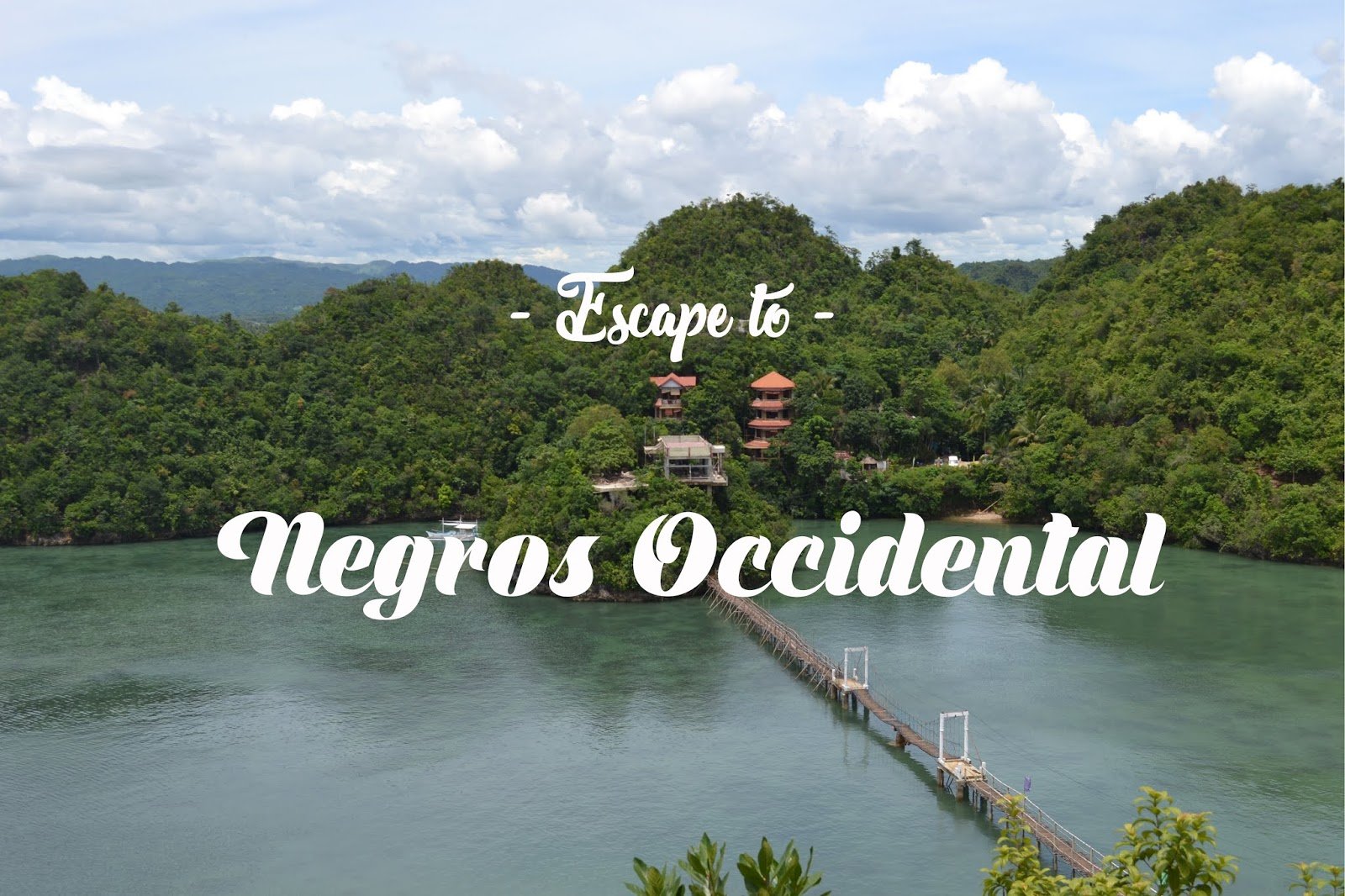
.jpg)
Bac Ninh cycling lets you experience the beautiful Vietnamese countryside in the northern Vietnam. Pedaling on the back roads, through rural village lanes while greeting local farmers and school kids as you pass by, all add to an immersive experience!
May 28, 2025
.jpg)
Electric bikes, or e-bikes use rechargeable batteries to assist cyclists with a small electric motor. E-bikes are particularly suitable for holidays, as they allow people who do not share the same level of fitness to enjoy cycling activities together. Cycling in Vietnam with our electric bicycles is a truly amazing experience — They help cyclists ride longer distances per day trip, and navigate routes with uphill sections more easily. This makes a wider range of destinations accessible to a wider range of cyclists, including senior cycling tourists. Wandering through rural villages, eating delicious food, and enjoying this country’s great landscape. From long-distance treks to shorter rides and sightseeing, there is a route for everyone!
May 28, 2025
.jpg)
We have a wide range of kids bikes for our bike tours in Hanoi Vietnam. Our small bicycles are used for both boys and girls. There is no difference between boy bikes and girl bikes. The bike frame is the same – Children’s bikes are sized by wheel rather than frame because it’s the wheels that determine the proportions of the rest of the bike. Make sure your child can operate the brake and gear levels comfortably, and that the pedals are positioned for safe stopping.
May 28, 2025
.jpg)
A single speed bicycles or a fixed gear bike is a type of bicycle with a single gear ratio. These bicycles are without derailleur gears, hub gearing or other methods for varying the gear ratio of the bicycle. There are many types of single speed bicycles such as single speed bikes for children, cruiser type bicycles, classic commuter bicycles, unicycles, bicycles designed for track racing, fixed-gear road bicycles, and single-speed mountain bikes.
May 28, 2025
.jpg)
Mountain bikes are designed to be ridden over rugged terrain and technical trails with logs, rocks, roots and other obstacles. They have a sharp frame geometry that puts the rider in a commanding position to pedal and climb efficiently. They have lower gear ratios that allow riders to pedal through steep and difficult terrain. Because of their intended use, mountain bikes are sturdy and overbuilt to handle the abuse of the trails. They usually have larger, heavily knobbed tires and strong brakes like hydraulic disc brakes. Many mountain bikes feature a kind of suspension shock over the front tire or both front and rear, allowing the frame to comply with the bumps, jumps and challenges of the trail.
May 28, 2025
.jpg)
Giant are the world’s leading brand for quality and safety in bikes. Giant Anyroad bicycles are designed with a lightweight yet durable ALUXX alloy frame featuring a taller headtube and increased toptube stand-over distance for confident handling.
May 28, 2025
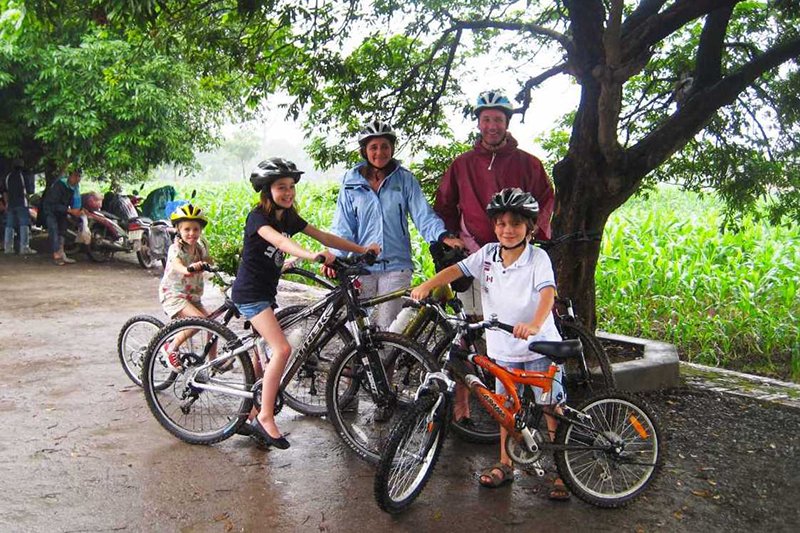
Hanoi Cycling lets you experience the beautiful countryside of the Vietnam’s capital, as well as rural Hanoi village life from up close. Pedaling on the back roads, through countryside lanes while greeting local farmers and school kids as you pass by, all add to an immersive experience!
May 28, 2025
.jpg)
Hybrid bicycles are a combination of a road bike and a mountain bike. Hybrid bikes feature relaxed frame geometry and raised handlebars, meaning that you sit up straigh
May 28, 2025
.jpg)
At the inaugural night tour of Cuc Phuong National Park in northern Vietnam on Saturday, close to a hundred visitors took part in a variety of activities.
A park spokesman said that most visitors were excited to take part in the trip.
May 28, 2025
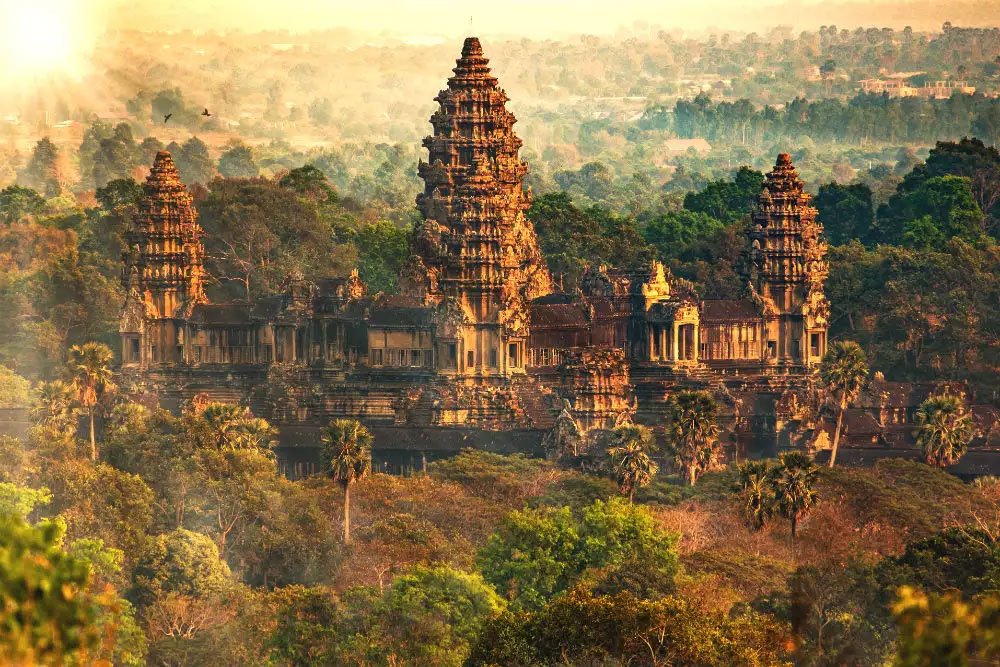
In Cambodia, the climate is tropical, and stays warm all year long. It is governed by the monsoon winds, so that this country has two main seasons in a year.
May 28, 2025
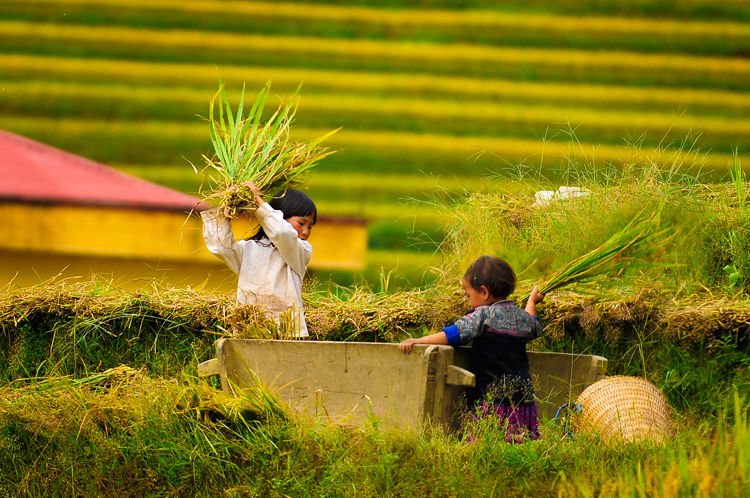
Mu Cang Chai is a highland district of Yen Bai province, about 280km from Hanoi. Each season, this place receives thousand domestic and international tourists. The district lies at the foot of the Hoang Lien Mountains, at an altitude of 1,000 m above sea level. To reach Mu Cang Chai district, go through Khau Pha pass - one of the four Great Passes of the Northwest.
May 28, 2025

People said that “If one has not visited floating market, he has not visited the south-west of Vietnam”. Literally, floating markets which have been around for a long time make the liveliest part of life in the south-west, the land of rivers, canals and ditches.
May 28, 2025

If you are in Vietnam on September 2, you will feel the extraordinary daily life of Vietnamese people. So what activities are recommended on this day?
May 28, 2025

Pottery class Bat Trang is one of activity with unique experience which help people to reduce stress and improve the creativity.
May 28, 2025
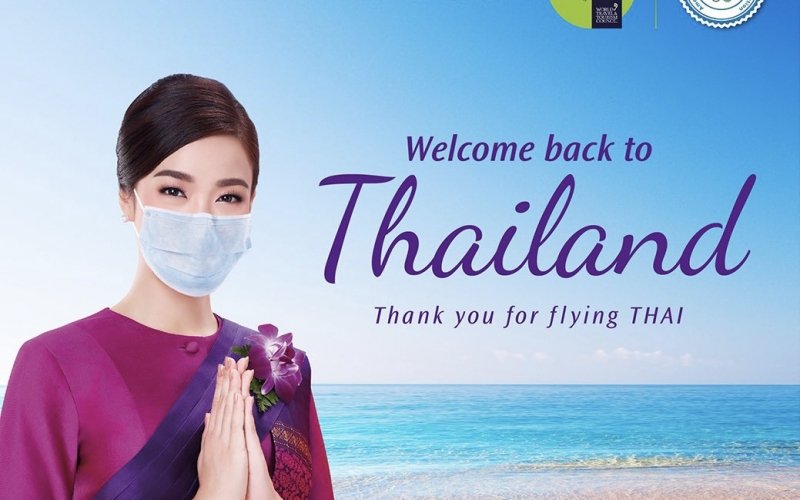
Prime Minister Prayut Chan-o-cha says Thailand will open the country to visitors from 46 countries instead of only 10 Covid-19 low-ríkyy countries announced earlier, starting from Nov 1.
May 28, 2025